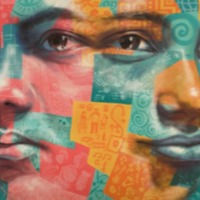
Miracle
There are an estimated 10,000 people living in modern slavery in Lebanon (GSI 2018). Men, women, and children among the estimated 1.3 million Syrian refugees in Lebanon are at high risk of sex trafficking and forced labour. There are some restrictions on Syrians’ ability to work legally in Lebanon and the enforcement of visas and residence permit laws increase this population’s vulnerability to trafficking. Syrians are commonly involved in the exploitation of other Syrians in Lebanon, particularly targeting refugees fleeing the conflict. Syrian children are reportedly vulnerable to forced early marriages—which can lead to commercial sexual exploitation and forced labour—and children displaced within the country continue to be subjected to forced labour, particularly by organized begging rings. Miracle left Nigeria after meeting someone who promised to help her find a job in Europe. On the way she found out she was pregnant and her smuggler attempted to force her to abort the pregnancy. When she arrived in Libya, Miracle and the other girls were locked up and sold to a Madam to be forced into prostitution. However, because Miracle was pregnant, she could not be sold. She spent two months locked inside a room before being taken to boat to cross over to Europe. When she arrived in Europe, she found that she had been deceived by promises of work.
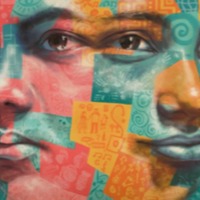
Joanna
From Joanna’s narrative it is unclear in which country Joanna experienced her exploitation. She was trafficked into prostitution abroad at the age of eighteen by the man she loved and the father of her child. After a while, her traffickers left her on the streets and she was picked up by police and taken to prison while they found a translator to communicate with her. When she was taken back home, her family and community had disowned her and she became homeless. She was helped by a woman who took her to a clinic for women who had experienced the same things she had.
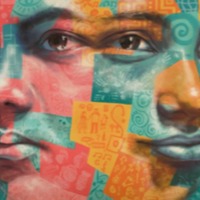
Rebekah Begay
There are an estimated 403,000 people living in modern slavery in the United States (GSI 2018). Sex trafficking exists throughout the country. Traffickers use violence, threats, lies, debt bondage and other forms of coercion to compel adults and children to engage in commercial sex acts against their will. The situations that sex trafficking victims face vary, many victims become romantically involved with someone who then forces them into prostitution. Others are lured with false promises of a job, and some are forced to sell sex by members of their own families. Victims of sex trafficking include both foreign nationals and US citizens, with women making up the majority of those trafficked for the purposes of commercial sexual exploitation. In 2015, the most reported venues/industries for sex trafficking included commercial-front brothels, hotel/motel-based trafficking, online advertisements with unknown locations, residential brothels, and street-based sex trafficking. Rebekah Begay was sexual abused at a young age by her family and by her first boyfriend. Begay developed a drug addiction and ran away, flying to Atlanta to live with her sister. When she was 16 years old, Begay met a man on a dating website, but after a few months he took her to a house and sold her into prostitution. She was able to run away when one of the men she had been sold to was distracted but the experience had lasting effects.
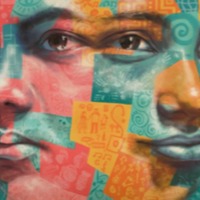
Amanthi K.
There are an estimated 61,000 people living in modern slavery in Saudi Arabia (GSI 2018). It is a source and destination country for men and women trafficked from South and South East Asia and Africa. People voluntarily migrate to the country to work in a variety of sectors including construction and domestic service; many of these workers are vulnerable to forced labour. Traffickers and brokers often illegally recruit migrants to work in Saudi Arabia and subsequently forced them into domestic servitude or debt bondage. Female domestic workers are particularly at risk of trafficking due to their isolation inside private residences. Non-payment or late payment of wages remains a complaint from foreign workers, while employer's withholding of worker's passports remains a significant problem. Trafficking perpetrators include businesses of all sizes, private families, recruitment companies in both Saudi Arabia and labor-sending countries, and organized criminal elements.Amanthi K. travelled to Saudi Arabia for work where she was trapped in domestic servitude. She became pregnant after her employer raped her and was sentenced to nine months in prison for adultery in 2006. Amanthi K. reported that there was an interpreter between Arabic and Sinhala, but that she had no lawyer. The Saudi authorities did not provide her with an opportunity to notify the Sri Lankan mission about her case and she had no contact or assistance from them during her ordeal.
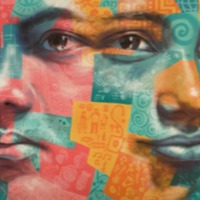
Jayanadani A.
There are an estimated 61,000 people living in modern slavery in Saudi Arabia (GSI 2018). It is a source and destination country for men and women trafficked from South and South East Asia and Africa. People voluntarily migrate to the country to work in a variety of sectors including construction and domestic service; many of these workers are vulnerable to forced labour. Traffickers and brokers often illegally recruit migrants to work in Saudi Arabia and subsequently forced them into domestic servitude or debt bondage. Female domestic workers are particularly at risk of trafficking due to their isolation inside private residences. Non-payment or late payment of wages remains a complaint from foreign workers, while employer's withholding of worker's passports remains a significant problem. Trafficking perpetrators include businesses of all sizes, private families, recruitment companies in both Saudi Arabia and labor-sending countries, and organized criminal elements. Jayanadani A. was trapped in domestic servitude in Saudi Arabia. She explains her husband’s reaction upon finding out she had been raped and impregnated by her Saudi employer.

Tina
There are an estimated 136,000 people living on conditions of modern slavery in the United Kingdom (Global Slavery Index 2018). According to the 2017 annual figures provided by the National Crime Agency, 5, 145 potential victims of modern slavery were referred through the National Referral Mechanism in 2017, of whom 2,454 were female, 2688 were male and 3 were transgender, with 41% of all referrals being children at the time of exploitation. People are subjected to slavery in the UK in the form of domestic servitude, labour exploitation, organ harvesting and sexual exploitation, with the largest number of potential victims originating from Albania, China, Vietnam and Nigeria. This data however does not consider the unknown numbers of victims that are not reported. Tina is from India but travelled to the UK where she was forced to marry a man she did not know. She was abused by both him and his family. She became pregnant and worried for her child. She escaped from her abusers and was referred to Black Country Women's Aid who supported her in their refuge. There she lived alongside other women and children who had escaped abuse.
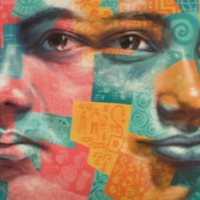
A.
There are an estimated 20,000 people living in conditions of modern slavery in Albania (GSI 2018). An estimated 10% of girls in Albania are married before their eighteenth birthday, with child marriage most common among the Roma ethnic group and in poor, isolated and rural areas. Child marriage is driven by gender inequality and while country has committed to eliminate child, early and forced marriage by 2030 in line with target 5.3 of the UN Sustainable development goals, no progress has been reported thus far. Human traffickers also exploit domestic and foreign victims in Albania, and traffickers exploit victims from Albania abroad. Traffickers exploit Albanian women and children in sex trafficking and forced labor within the country, especially during tourist season. Traffickers use false promises such as marriage or employment offers to force victims into sex trafficking. Traffickers exploit Albanian victims in sex trafficking in countries across Europe, particularly Kosovo, Greece, Italy, Belgium, Germany, Switzerland, North Macedonia, Norway, the Netherlands, and the UK. Albanian migrants who seek employment in Western Europe face forced labor and forced criminality, particularly in the UK. When she was a young girl A’s mother left her father for another man. Too poor to look after her, A’s mother sent her to live with a neighbours’ family who, while treating her well at first, began to withhold food and exploit her. She stayed there for one year before returning to live with her mother who, after spending some time begging, had been forced in to prostitution by a man who had promised to help her get a better house. A’s mother’s boyfriend began sexually abusing her, and when a friend found out, he hit the boyfriend with his car. A began working as a prostitute at the age of 13, thinking she was helping her mother who was too ill to work. One day A met a man who took her to a convent in Italy who referred her to a shelter where she was helped build a better life.
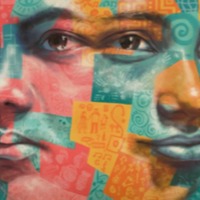
Joanna
There are an estimated 403,000 people living in modern slavery in the United States (GSI 2018). Sex trafficking exists throughout the country. Traffickers use violence, threats, lies, debt bondage and other forms of coercion to compel adults and children to engage in commercial sex acts against their will. The situations that sex trafficking victims face vary, many victims become romantically involved with someone who then forces them into prostitution. Others are lured with false promises of a job, and some are forced to sell sex by members of their own families. Victims of sex trafficking include both foreign nationals and US citizens, with women making up the majority of those trafficked for the purposes of commercial sexual exploitation. In 2015, the most reported venues/industries for sex trafficking included commercial-front brothels, hotel/motel-based trafficking, online advertisements with unknown locations, residential brothels, and street-based sex trafficking. Joanna was born in a small town in Europe/ When she was 18 she met a man who said he wanted to marry her. They began seeing each other and Joanna became pregnant. Her boyfriend took Joanna to the United States where their child was born. Unable to read, Joanna was told to sign a piece of paper at the hospital and never saw her child again. She was taken to an apartment building where other young girls like her were being kept. Joanna was forced to provide sexual services, raped multiple times a day. She was finally able to escape one day when she became ill.
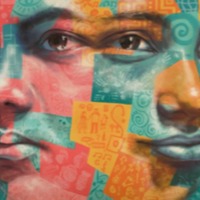
Soneeya
There are an estimated 171,000 people living in modern slavery in Nepal. Internal trafficking is significant in Nepal. Girls are trafficked internally for forced labour, sexual exploitation and forced marriage. A significant number of girls are estimated to be trafficked for sexual exploitation in Kathmandu’s entertainment sector and across the open border with India to Mumbai and other urban centres. Recent research in Kathmandu found that between 40 and 60 per cent of the females interviewed in entertainment sector workplaces (massage parlours, dance bars and cabin restaurants) were under the age of 19. Poverty is a significant driving factor for the exploitation and forced marriage of young girls in the country as although levels are declining, an estimated 10 million people live on incomes between USD1.90 and USD3.20 a day. When Soneeya was 15 years old, she was forced to marry a man 13 years older. She was subjected to physical and sexual abuse daily.
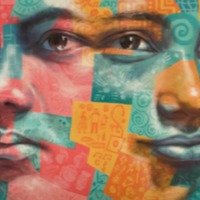
Ashia C
There are an estimated 171,000 people living in modern slavery in Nepal (GSI 2018). Within Nepal, bonded labour exists in agriculture, brick kilns, the stone-breaking industry, and domestic work. Sex trafficking of Nepali women and girls increasingly takes place in private apartments, rented rooms, guest houses, and restaurants. Nepali and Indian children are subjected to forced labor in the country, especially in domestic work, brick kilns, and the embroidered textile, or zari, industry. Under false promises of education and work opportunities, Nepali parents give their children to brokers who instead take them to frequently unregistered children’s homes in urban locations, where they are forced to pretend to be orphans to garner donations from tourists and volunteers; some of the children are also forced to beg on the street. According to Human Rights Watch, thirty-seven percent of girls in Nepal marry before age 18 and 10 percent are married by age 15, in spite of the fact that the minimum age of marriage under Nepali law is 20 years of age. UNICEF data indicates that Nepal has the third highest rate of child marriage in Asia, after Bangladesh and India Ashia C was forced to marry at an early age. Within the marriage she was subjected to physical violence.
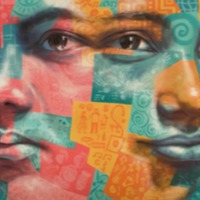
Medamani Nagamma
It is estimated that almost 8 million people are living in conditions of modern slavery in India (GSI 2018). The skewed sex ratio in some regions of India has fuelled the trafficking and selling of women and young girls as brides within India. Women are reportedly sold off into marriage by their families, sometimes at a young age, and end up enduring severe abuse, rape and exploitation by their husbands. It is also reported that women and girls from impoverished backgrounds have been lured by promises of marriage by younger men from urban areas, then forced into sex work once married. Medamani Nagamma was forced to marry at a young age. Within the marriage she was forced to do housework and raped by her husband. After a complicated pregnancy it was suggested that she undergo sterilisation.
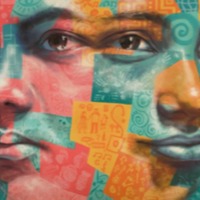
Sade
There are an estimated 136,000 people living on conditions of modern slavery in the United Kingdom (Global Slavery Index 2018). According to the 2017 annual figures provided by the National Crime Agency, 5, 145 potential victims of modern slavery were referred through the National Referral Mechanism in 2017, of whom 2,454 were female, 2688 were male and 3 were transgender, with 41% of all referrals being children at the time of exploitation. People are subjected to slavery in the UK in the form of domestic servitude, labour exploitation, organ harvesting and sexual exploitation, with the largest number of potential victims originating from Albania, China, Vietnam and Nigeria. This data however does not consider the unknown numbers of victims that are not reported. Sade*was pregnant when she escaped sexual exploitation in East London. She recounts her negative experiences of dealing with the police upon her escape.
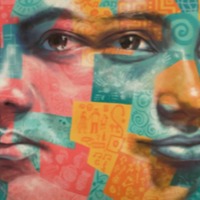
Christelle
There are an estimated 9000 people living in conditions of modern slavery in Gabon (GSI 2018). The country is a primary destination and transit country for West and Central African men, women and children subjected to forced labour and sex trafficking. Boys are forced to work as street vendors, mechanics, or in microbus transportation and the fishing sector. Girls are subjected to domestic servitude and forced labor in markets or roadside restaurants. Gabonese children are exploited as market vendors in eastern provinces of the country. In some cases, families willingly give children to intermediaries who fraudulently promise education or terms of employment they ultimately do not provide, instead subjecting the children to forced labor through debt bondage. Some traffickers procure falsified documents for child trafficking victims to make them appear older than 18 years old to avoid prosecution under the child trafficking law. Christelle’s home village is Assahoun, in the southwest of Togo (Maritime Region). She is the eldest of five children and was in Standard Five at the Catholic Primary School when she left with traffickers on the long journey to Gabon. Today, Christelle is back in her village with her parents. She is under apprenticeship to become a seamstress. Her training is being supported as part of a joint effort by Plan Togo and the Department for the Protection and Promotion of the Family and Children and is financed by Plan Togo.
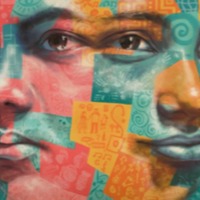
Rajita Atri
There are an estimated 171,000 people living in modern slavery in Nepal. Within Nepal, bonded labour exists in agriculture, brick kilns, the stone-breaking industry, and domestic work. Sex trafficking of Nepali women and girls increasingly takes place in private apartments, rented rooms, guest houses, and restaurants. Nepali and Indian children are subjected to forced labor in the country, especially in domestic work, brick kilns, and the embroidered textile, or zari, industry. Under false promises of education and work opportunities, Nepali parents give their children to brokers who instead take them to frequently unregistered children’s homes in urban locations, where they are forced to pretend to be orphans to garner donations from tourists and volunteers; some of the children are also forced to beg on the street. According to Human Rights Watch, thirty-seven percent of girls in Nepal marry before age 18 and 10 percent are married by age 15, in spite of the fact that the minimum age of marriage under Nepali law is 20 years of age. UNICEF data indicates that Nepal has the third highest rate of child marriage in Asia, after Bangladesh and India.Rajitra was forced to marry at a young age, causing complications with her pregnancies.
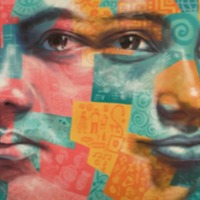
Aung Ja
The Global Slavery Index 2018 estimates that on any given day in 2016 there were over 3.8 million people living in conditions of modern slavery in China. Included in the types of slavery prevalent in China is forced labour, with China's unprecedented rise to the world's second largest economy and its domestic economy specialising in the production of labour-intensive, cheap goods for export, increasing the demand for cheap labour. Forced labour occurs in both the manufacturing and construction sectors, as well as more informal industries such as brick kilns and garment facoties. Many women are also tricked in to forced labour as domestic servants, lured by the promise of good jobs with high incomes they instead find themselves confined to the house and forced to work long hours with little or no pay. Aung Ja* was 18 when a woman from Myitkina, northern Myanmar, convinced her to take a ‘factory’ job in China. She was rescued in 2017 and is taking part in a UN Women-supported trafficking prevention programme.
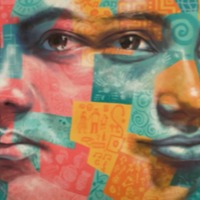
Mun Pan
The Global Slavery Index 2018 estimates that on any given day in 2016 there were over 3.8 million people living in conditions of modern slavery in China. Women and girls from South Asia, Southeast Asia and Africa are trafficked into the country for fees of up to £30,000. The gender imbalance caused by the One Child Policy and the cultural preference for male children, has caused a shortage of women which has led to the trafficking of women to be sold as brides or to birth babies. As a result many women find themselves either deceived by promises of employment, sold or abducted and forced into marrying Chinese men who have paid for them. Mun Pan was barely 18 years old when she was trafficked from Myanmar to China and forced to provide children for Chinese men.The women in Mun Pan’s room told her that if she tried to escape, she would be murdered and her body would not be returned to her family.
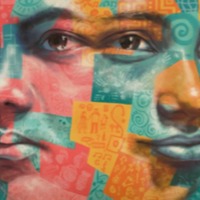
Khawng Nu
The Global Slavery Index 2018 estimates that on any given day in 2016 there were over 3.8 million people living in conditions of modern slavery in China. Women and girls from South Asia, Southeast Asia and Africa are trafficked into the country for fees of up to £30,000. The gender imbalance caused by the One Child Policy and the cultural preference for male children, has caused a shortage of women which has led to the trafficking of women to be sold as brides or to birth babies. As a result many women find themselves either deceived by promises of employment, sold or abducted and forced into marrying Chinese men who have paid for them. Khawng Nu was 22 years old when she was trafficked from the state of Kachin, northern Myanmar, to China. She thought she was going for work, however upon arrival she found that she would be used to provide children to Chinese men. Khawng Nu managed to send a message to her family, who shared it with the pastor and informed the village leaders. The broker from her village was arrested but didn’t disclose her location. Khawng Nu recalls seeing some 40 women on the floor of the building she was kept; some as young as 16. Eventually Khawng Nu’s family were able to pay a ransom for her return, borrowing from neighbours to pay the ‘fine’.
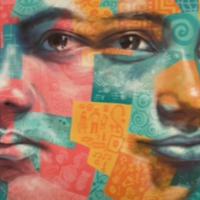
Afrah
There are an estimated 85,000 people living in modern slavery in Yemen (GSI 2018). Young girls are subjected to child forced marriage, with UNICEF estimating 32% of girls being married before the age of 18. There is currently no legal age of marriage in Yemen and poverty, the practice of dowry and strict social and religious customs are drivers of child marriage in the country. With the onset of conflict within the country, estimates suggest that child marriage is on the rise. Afrah was 16 years old when she was forced to leave school and get married.
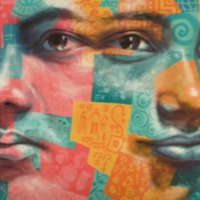
Najla
There are an estimated 85,000 people living in modern slavery in Yemen (GSI 2018). Young girls are subjected to child forced marriage, with UNICEF estimating 32% of girls being married before the age of 18. There is currently no legal age of marriage in Yemen and poverty, the practice of dowry and strict social and religious customs are drivers of child marriage in the country. With the onset of conflict within the country, estimates suggest that child marriage is on the rise. Najla did not know exactly how old she is, but she said that she was married soon after completing her second year in secondary school, which would have made her about 15 or 16 at the time of her marriage. She has been married for seven years and has two children who were likely born before she was 18 years old. She explained how she was denied medical treatment by her in-laws.
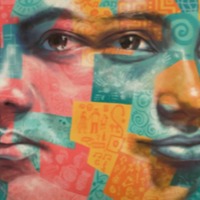
Amal
There are an estimated 85,000 people living in modern slavery in Yemen (GSI 2018). Young girls are subjected to child forced marriage, with UNICEF estimating 32% of girls being married before the age of 18. There is currently no legal age of marriage in Yemen and poverty, the practice of dowry and strict social and religious customs are drivers of child marriage in the country. With the onset of conflict within the country, estimates suggest that child marriage is on the rise. Amal was married when she was 15 and had her only daughter when she was 17.